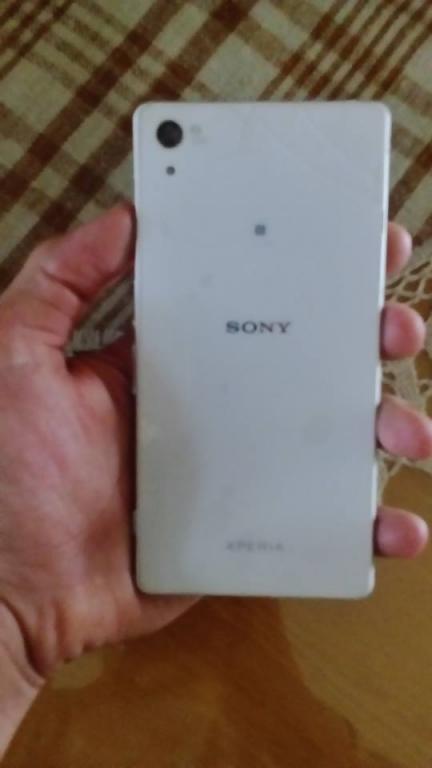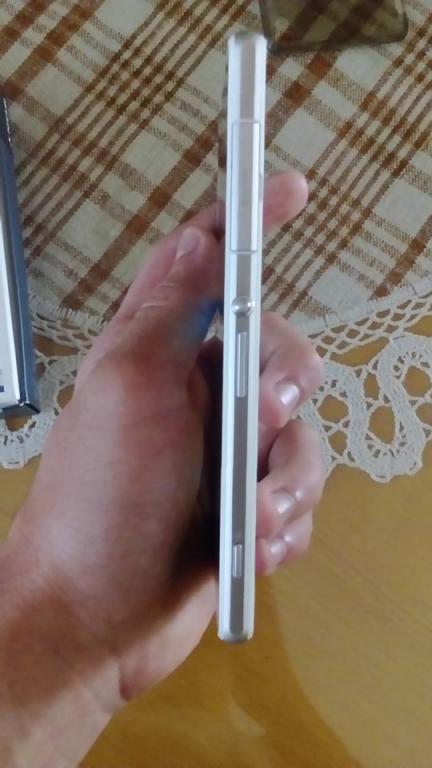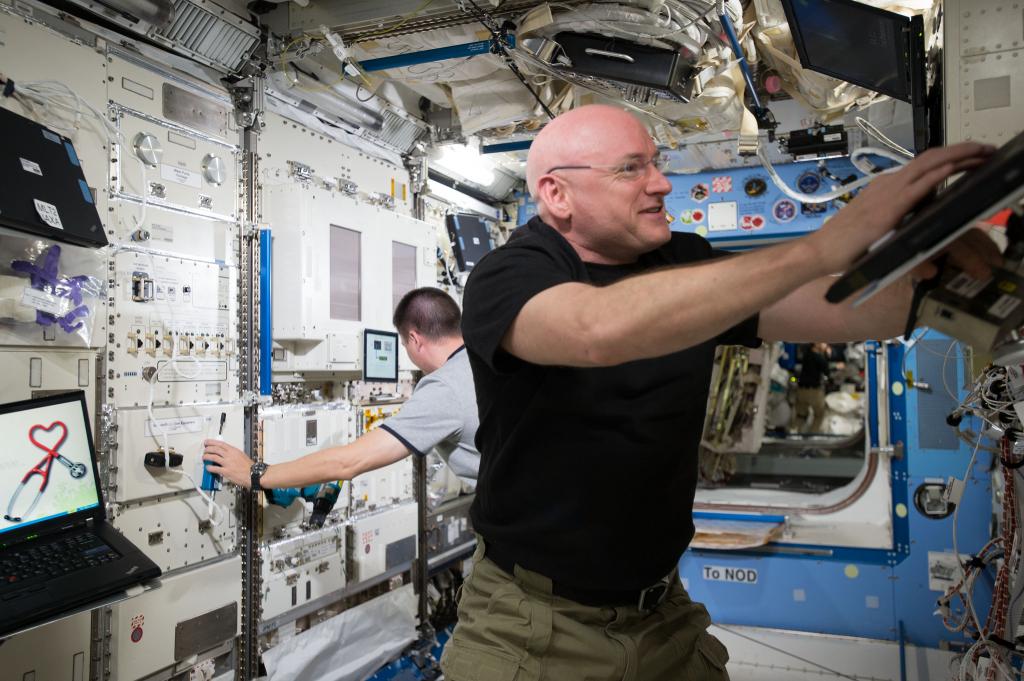-
Posts
2,379 -
Joined
-
Last visited
-
Days Won
14
Everything posted by Astora
-
Hvala Dule puno. Ja bio prisutan na utakmici ali svakako nisam stigao da pogledam i snimak. Šteta što nije bilo više publike.
-
-
Cena je 230 eura i lično preuzimanje, takodje idu 2 bambera uz telefon.
-
-
Ako neko kojim slučajem sutra planira da ode do Valjeva kolima, neka mi se javi. Hvala unapred.
-
Ma i bos ću vas rolati. =) Imam patike za fucu. =)
-
Prijavljujem se i ja u tabor povremenih s tim što, ako bi se našli neki termini da budu oko 20 časova i na Novom Beogradu, verovatno bih bio i redovniji. Zanima me samo, da li dozvojlavaju nošenje kopački u balonu?
-
Pitanje je, posle toliko dana provedenih gore, kako će njegov organizam reagovati kad se vrati na zemlju, pogotovo noge i kretanje? Znam da imaju sprave za vežbanje ali opet, gore je toliko dugo.
-
Vidi ovu dvojcu, koje ste vi ženetine. Pa dajte koju reč podrške za čoveka sa fotke. Ako se ne varam, vreme gore sporije teče?
-
zovi iphone-srbija pa vidi sa njima ako uopste moze da se popravi Skupa je popravka pa sam u dogovoru sa prodavcem vratio telefon i uzeo od jednog čoveka potpuno legalan iphone 4s 16 gb za 10.000 dinara. Bilo je natezanja sa njim oko uklanjanja icloud naloga i oko isključivanja FMI (findmyiphone), na kraju je odradio sve to, uradio sam reset i telefon šljaka bez ikakvih problema. Ima sitnig tragova korišćenja i gledaću sutra da postavim fotke telefona. Generalno, prezadovoljan sam a što je najvažnije pazario sam baš jeftin telefon u ovakvom stanju. Gorelo mu je za pare i srećom sam naleteo prvi.
-
Scott Kelly Becomes U.S. Astronaut to Spend the Most Time Living in SpaceJust before the 15th anniversary of continuous human presence on the International Space Station, U.S. astronaut and commander of the current Expedition 45 crew, Scott Kelly, is breaking spaceflight records. On Friday, Oct. 16, Kelly will begin his 383rd day living in space, surpassing U.S. astronaut Mike Fincke’s record of 382 cumulative days. Watch a YouTube video about Kelly and his year-long mission. Breaking such a record for time in space is important because every additional day helps us better understand how long-duration spaceflight affects bodies and minds, which is critical to advancing NASA’s journey to Mars. Fifteen years of living and working off the Earth also is improving the quality of our lives here on Earth as scientists and engineers apply the knowledge gained from investigations aboard the unique microgravity laboratory. Kelly will break another record Oct. 29 on his 216th consecutive day in space, when he will surpass astronaut Michael Lopez-Alegria’s record for the single-longest spaceflight by an American. Lopez-Alegria spent 215 days in space as commander of the Expedition 14 crew in 2006. Each additional day in orbit as part of the one-year mission along with cosmonaut Mikhail Kornienko, Kelly will continue to add to his record and to our understanding of the effects of long-duration spaceflight. The pair arrived at the space station in March and are participating in studies during their 342 days in space that provide new insights into how the human body adjusts to weightlessness, isolation, radiation and stress of long-duration spaceflight. Kelly’s twin brother, former astronaut Mark Kelly, will participate in parallel twin studies on Earth to help scientists compare the effects on the body and mind in space. The investigations in progress on the space station will help scientists better understand how to protect astronauts as they travel into deep space and eventually on missions to the Red Planet. The strong U.S.-Russian collaboration during the one-year mission is an example of the global cooperation aboard the space station that is a blueprint for international partnerships to advance shared goals in space exploration. Strengthening international partnerships will be key in taking humans deeper into the solar system. Kelly is scheduled to return to Earth on March 3, 2016, by which time he will have compiled 522 total days living in space during four missions. Kelly is not the only human breaking records for time in space. Expedition 44 commander Gennady Padalka broke the 10-year-old record for the number of cumulative days in space June 28, as he reached 804 days in space. When he returned to Earth Sept. 11, Padalka had spent 879 days living and working in space. Kelly, Padalka, and the more than 200 people who have visited the space station are contributing to the development of capabilities to enable a sustainable human presence in deep space.
-
Search For Intelligent Aliens Near Bizarre Dimming Star Has BegunThe search for signs of life in a mysterious star system hypothesized to potentially harbor an "alien megastructure" is now underway. Astronomers have begun using the Allen Telescope Array (ATA), a system of radio dishes about 300 miles (483 kilometers) northeast of San Francisco, to hunt for signals coming from the vicinity of KIC 8462852, a star that lies 1,500 light-years from Earth. NASA's Kepler space telescope found that KIC 8462852 dimmed oddly and dramatically several times over the past few years. The dimming events were far too substantial to be caused by a planet crossing the star's face, researchers say, and other possible explanations, such as an enormous dust cloud, don't add up, either. [13 Ways to Hunt Intelligent Alien Life] The leading hypothesis at the moment involves a swarm of comets that may have been sent careening toward KIC 8462852, possibly after a gravitational jostle by a passing star. But it's also possible, astronomers say, that the signal Kepler saw was caused by huge structures built by an alien civilization — say, a giant assortment of orbiting solar panels. That latter possibility, remote though it may be, has put KIC 8462852 in the crosshairs of scientists who hunt for signals that may have been generated by intelligent aliens. "We are looking at it with the Allen Telescope Array," said Seth Shostak, a senior astronomer at the SETI (Search for Extraterrestrial Intelligence) Institute in Mountain View, California. "No problem with that; I think we ought to, for sure," Shostak told Space.com. But, he added, people "should perhaps moderate their enthusiasm with the lessons of history." Shostak cited the example of pulsars, fast-spinning, superdense stellar corpses that emit beams of high-energy radiation. These beams are picked up by instruments on and around Earth as regular pulses, because they can only be detected when they're fired straight at the planet (an event that occurs at predictable intervals because of pulsars' rotation). Astronomers know all this now. But in the 1960s, when the first pulsar signals were discovered, some scientists interpreted them as possible alien transmissions. "So history suggests we're going to find an explanation for this that doesn't involve Klingons, if you will," Shostak said of the KIC 8462852 mystery. But until such an explanation is found, the intelligent-aliens hypothesis will still be on the table, even if the ATA and other instruments like it come up empty. The lack of a detectable signal, after all, does not establish that KIC 8462852 is a lifeless system. The star may support lifeforms that do not emit signals we can pick up, for example. Or it may once have hosted a civilization that has since gone extinct, leaving the strange megastructure as a sort of monument. Kepler's main planet-hunting work suggests that the Milky Way galaxy teems with billions of rocky, potentially habitable planets. So KIC 8462852 is far from the only lead that Shostak and his colleagues will be chasing down in the coming years. "It almost doesn’t matter where you point your telescope, because there are planets everywhere," Shostak said. "If there's somebody out there, there are going to be so many of them out there that I do think there's a chance." Follow Mike Wall on Twitter @michaeldwall and Google+. Follow us @Spacedotcom, Facebook or Google+. Originally published on Space.com.
-
Have We Really Discovered A Huge Alien Megastructure Around A Star? Last week, the internet was abuzz with the news of a mysterious object orbiting a distant star 1,500 light-years away that was blocking a huge amount of its light. With no obvious candidate for what the object could be, one scientist suggested the very faint possibility that it could be artificial in nature – yes, made by aliens. “Aliens should always be the very last hypothesis you consider, but this looked like something you would expect an alien civilization to build,” Jason Wright, an astrophysicist from Pennsylvania State University, told The Atlantic. Wright wasn't directly involved in the study, which has been published in Arxiv, but made his comments after discussing the findings with lead author Tabetha Boyajian. Is he right, and if so, what could it be? Wright has since clarified his comments and said that such a theory is extremely (emphasis on “extremely”) unlikely. But it’s intriguing, nonetheless – if not least to spark discussion as what might be out there. After all, there are hundreds of billions of planets in our galaxy, itself one of hundreds of millions of galaxies in the known universe. It seems doubtful that we are the only planet with life on it, although why we have not found other intelligent life yet is a mystery, known as the Fermi Paradox. The star in question is KIC 8462852, an old star about 1.5 times larger than the Sun. Using the Kepler space telescope, a team of astronomers found that its light dipped by up to 20% on several occasions due to the orbit of a vast object that would have to be almost half the star’s size. What’s more, these huge dips occurred at random across the 1,600 days the star was observed. Owing to the age of the star, the object must be relatively new, or it would have been consumed by the star’s gravity. The other object cannot be a star, as it is not emitting light nor is it circular. It is also unlikely to be a planet, owing to its irregular orbit. So, what is it? In the paper, the leading suggestion is that it is debris left from comets breaking up around the star. This would be expected to produce large amounts of infra-red radiation, though, owing to the scattering of dust around the star, something that was not observed. This led Wright to suggest the other, more outlandish theory – that an alien civilization could be the cause, or more specifically, a Dyson sphere. A Dyson sphere is a structure that harnesses a star’s energy for use by a civilization, sort of like solar power but on a massive scale. It would be composed of hundreds or thousands of spacecraft, often referred to as a Dyson swarm, that would theoretically be large enough to block out a significant portion of a star's light. It’s estimated that as a civilization gets more and more advanced, it will require more and more energy to thrive. Some consider a Dyson sphere the best way to gather this energy, labeling the civilization a type 1 on the Kardashev Scale (for reference, we are at 0.73). However, a recent separate study to find such structures around stars proved fruitless. Indeed, if this were a Dyson sphere, it would be producing large amounts of infrared radiation, something not apparent at the moment. The researchers are planning to use telescopes to observe the star in greater detail and see if it is producing any unusual signals, but for now there doesn’t seem to be anything untoward. One possibility is that the Dyson sphere is a remnant of an ancient civilization that is now extinct, or elsewhere, and the machines are defunct, simply left to orbit the star and block its light. Perhaps it could also be some other type of alien structure. The possibility has tantalised the SETI (Search for Extraterrestrial Intelligence) Institute in California enough to take a closer look at the star with the Allen Telescope Array as of today. We’ll have to wait and see if they find anything. But this is all very unlikely. We’re definitely not suggesting for certain this is some kind of alien technology. Indeed, similar speculation occurred in the past when pulsars – rapidly rotating neutron stars – were discovered and mistaken for possible signs of artificial intelligence. Their existence had not previously been theorized; perhaps this latest discovery is, too, a new natural phenomenon. Even if this turns out to be nothing more than a swarm of dead comets, or something else, that would still be of huge interest. But, here or elsewhere, we’re surely going to find some sign of another intelligent race eventually. If not, as the Fermi paradox famously states, then where is everyone?
-
PRVI ZNAK POSTOJANJA NAPREDNE CIVILIZACIJE IZVAN ZEMLJE? Znanstvenike uzbudili jedinstveni nalazi svemirskog teleskopa Kepler.Znanstveno istraživanje, objavljeno prošli mjesec bez velike pompe, moglo bi biti prvi otkriveni trag postojanja napredne tehnološke civilizacije izvan Zemlje, vjeruju neki znanstvenici. U sklopu misije Kepler, u kojoj veliki svemirski teleskop godinama promatra svjetlost zvijezda kako bi po varijacijama u intenzitetu svjetlosti otkrio prisustvo planeta, znanstvenici su pronašli neočekivanu anomaliju oko zvijezde KIC 8462852 Prema analizi intenziteta svjetlosti, radi se o masivnom oblaku velikih gromada nepoznatog materijala koji kruži oko zvijezde. Prvog su ga uočili ‘Lovci na planete’ - grupa volontera koji pomažu NASA-i u pronalaženju planeta tako što ručno analiziraju podatke s teleskopa Kepler. Lovci na planete označili su KIC 8462852 kao ‘zanimljivu’ i ‘bizarnu’ zvijezdu. Ubrzo nakon njih, podatke su počeli proučavati i NASA-ini stručnjaci. Na početku su mislili kako se radi o nakupini kamenitog materijala koji kruži oko mlade zvijezde - slično je, vjeruju, izgledao i Sunčev sustav izdaleka u vrijeme prije nego što su se oblikovali prvi planeti. No, ova čudna zvijezda nije bila mlada - radilo se o zreloj zvijezdi, s razvijenim planetarnim sustavom. Ukoliko se radi o prirodnoj pojavi, morala se dogoditi relativno nedavno - gravitacija bi razvukla svaku nakupinu tvari u prsten nakon dovoljno vremena. U znanstvenom članku objavljenom na online repozitoriju Arxiv, autorica Tabetha Boyajian, znanstvenica s Yalea koja nadgleda Lovce na planete, navela je nekoliko mogućih scenarija koji bi objasnili misterioznu pojavu - greška na instrumentima, sudari u asteroidnom pojasu, sudar planetarnih razmjera, ili prolazak druge zvijezde kroz sustav, koja bi povukla malo more kometa prema središtu sustava. Od svih ponuđenih mogućnosti, samo bi ovo potonje zadovoljilo sve kriterije, no moralo bi se raditi o nevjerjatnoj slučajnosti. Štoviše, bilo koje objašnjenje moralo bi biti neuobičajeno, jer se takva anomalija nije pojavila niti jednom u više od 150.000 promatranih zvjezdanih sustava. Astronom sa sveučilišta Penn, Jason Wright, ima alternativnu teoriju koju će uskoro objaviti. Pozivajući se na spekulacije stručnjaka koji tragaju za izvanzemaljskom inteligencijom, jedan od načina na koji bi napredne tehnološke civilizacije mogle biti prepoznate na daljinu je kroz otkriće velikog broja glomaznih tehnoloških artefakata koji orbitiraju neku zvijezdu. Wright i njegovi kolege vjeruju kako se nalaz sa zvijezde KIC 8462852 može objasniti ‘rojem megagrađevina’, moguće solarnih kolektora. - Kada mi je Boyajian pokazala podatke, fasciniralo me koliko su ludo izgledali, rekao je Wright za The Atlantic. - Vanzemaljci bi uvijek morali biti zadnja teorija koju razmatramo, no ovo je izgledalo poput nečega što bi izgradila vanzemaljska civilizacija. No, neće sve ostati na spekulaciji. Boyajian, Wright i direktor Centra za potragu za vanzemaljskom inteligencijom na Sveučilištu Berkeley u Kaliforniji, Andrew Siemion, počeli su raditi na planu eksperimenata koji bi mogli dodatno provjeriti teoriju o vanzemaljskoj civilizaciji. Troje znanstvenika žele usmjeriti radio-antenu prema KIC 8462852, kako bi provjerili dolazi li s te zvijezde više radio-valova nego što bi bilo očekivano za zvijezdu tog tipa. Ukoliko se otkrije signal koji bi mogao biti umjetnog podrijetla, pokušali bi rezervirati termin na Vrlo velikoj anteni u Novom Meksiku, koja bi s dovoljnom preciznošću mogla potvrditi radi li se, stvarno, o signalu koji potječe od tehnološki napredne civilizacije. (Nacionalna Geografija)
-
Ma ćuti, istraživači izgleda pronašli vanzemaljske oblike života. Pa u slučaju da E.T dođe, čisto da budem u trendu: Većina fura ajfone. Saznao sam u čemu je problem. Problem je čip koji je pokvaren ali ne znam koliko taj čip košta i koliko bi uopšte popravka toga koštala.
-
Uzeo sam Iphone 4s 32 gb sa jednom falinkom. Jeftino sam platio telefon, poprilično dugo smo se natezali oko cene (pravo pijačno cenkanje). Naime, jedini problem kod ovog telefona je WIFI koji čas radi, čas ne radi. Zanima me, da li se ovaj problem može rešiti i koliko bi ova investicija koštala? Telefon je veoma dobro očuvan, nema ogrebotine, folija napred i nazad, sa svim papirima i pratećom opremom. Platio sam ga samo 10.000 dinara. Inače, telefon je simfree.
-
Čekove sam unovčio danas. Ako neko prodaje navedeni telefon za 10.000 dinara, neka pusti poruku u inboks.
-
Kupujem Samsung Galaxy s3 telefon sa svom pratecom opremom, po mogućstvu. Nudim 2 čeka = 10.000 din. Lična primopredaja i na licu mesta ispunjavam potrebne podatke za čekove. Ostalo u inboks.
-
Znamo se, kolege smo.
-
Poslali supruga i ja.
-
Ćelo, jesi li se ovo peglao sa Markom Nikolićem ili neko drugi?
-
Ali šta? Jel može neko da mi pomogne da vratim ovo ili ne?
-
Ja iskreno ne razumem sta si radio, šta je sanduče. U mojoj glavi je film kako brišeš fajlove u recycle bin da bi oslobodio hdd prostor, pa posle vraćaš iz rec bina, ali to je sooo 1998 Tako je, s tim što sam ja zaboravio da vratim to iz recycle bin-a i obrisao sam sve što je tamo bilo..
-
Nije ništa pomoglo, nažalost. :/














